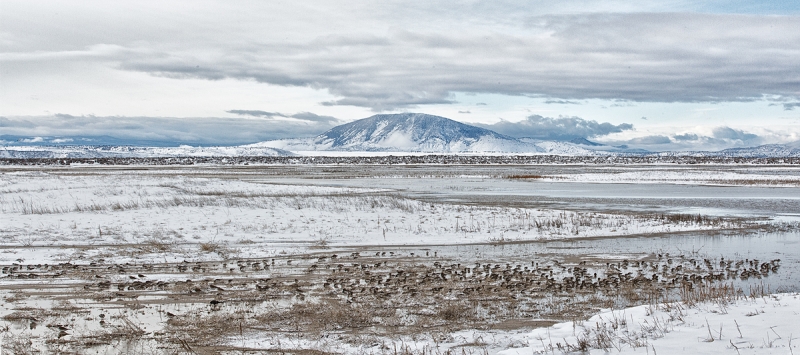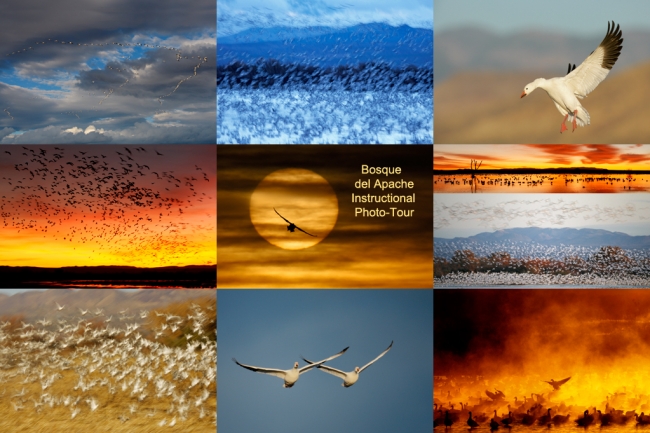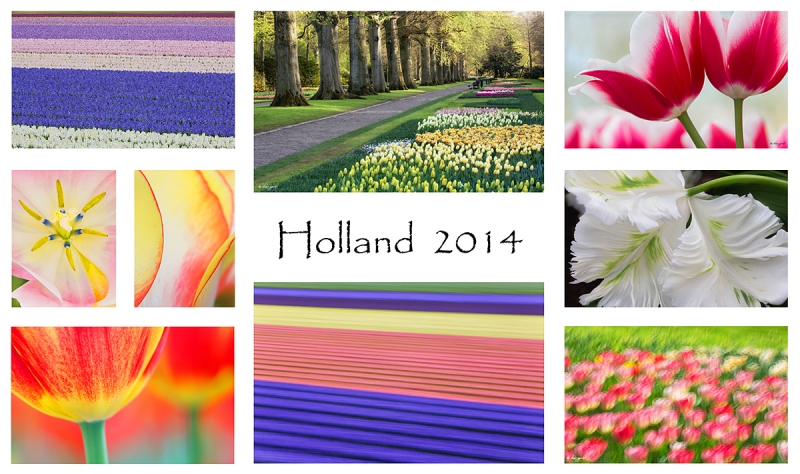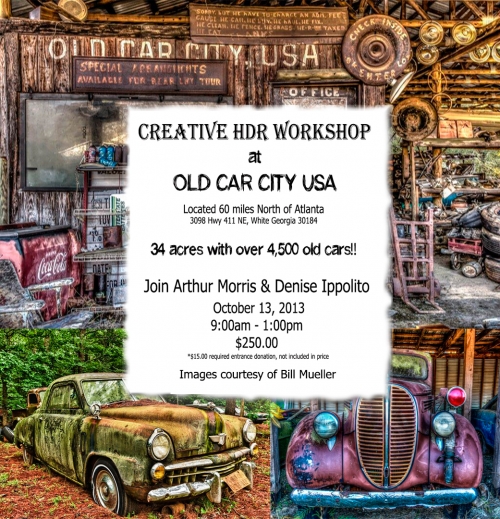|
The two-frame frames for this stitched pano were created with the tripod-mounted Canon EF 70-200mm f/2.8L IS II lens (at 70mm) and the now discontinued EOS-1D Mark IV (now replaced by the Canon EOS-1D X). ISO 400. Evaluative metering +1 stop: 1/250 sec. at f/16 in Tv mode. Central sensor/AI Servo/Rear Focus 1/3 of the way into the frame and recompose. Click here if you missed the Rear Focus Tutorial. Be sure to click on the image to see a larger version. |
A Strange Sight
When speaking at the Winter Wings Festival in Klamath, OR a few years back (generously sponsored by the Canon Explorers of Light program) I spent a good deal of my free time photographing at the Lower Klamath NWR, CA. Seeing a flock of Dunlin in an icy, snowy setting was quite a strange experience for me. Sharp-eyed folks should be able to pick out a few Killdeer as well.
I used a ton of Detail Extractor and Tonal Contrast on a single layer to punch up this image. I fine-tuned the effect with a regular Layer Mask with a brush of varying opacities. Then I did the same with a Layer of Viveza with the Structure slider set at +20. As the image was too BLUE I applied and Average Blur Color Balance layer and reduced the opacity to 50%. Let me know if you think that the image is overdone or just right.
All of the above of course as described in detail in Digital Basics File, an instructional PDF that is sent via e-mail. It includes my complete digital workflow, dozens of great Photoshop tips including Digital Eye Doctor techniques, several different ways of expanding canvas, all of my time-saving Keyboard Shortcuts, and Quick Masking, Layer Masking and NIK Color Efex Pro basics.
A Practical Image Design Question
Leave a comment and let us know why I should have moved my tripod 50-100 yards to my right before creating the two originals for this panorama.
Panorama Tips
It is best to use a tripod. Always work in Manual mode. Lock the vertical pan. Choose and set a specific White Balance; do not use Auto White Balance. (Thanks a stack to Denise Ippolito for that tip that explains why I sometimes have unexplained color mismatches!) If you do not use Rear Focus, you must focus manually. If you use Rear Focus as I do, focus once and leave it; do not refocus for each image. Lock the vertical pan. Keep some tension on the horizontal pan. Be sure to overlap the frames by at least 20%. Assemble in Photoshop via File/Automate/Photomerge. Click on Reposition. Browse and select the files to be merged. Hit OK. Take a short break.
Photographic Society of Chattanooga Seminar
Scroll down here for details on the Saturday seminar that Denise Ippolito and yours truly are doing in Chattanooga on October 12, 2013 and the follow-up Old Car City In-the-Field Workshop. Blog folks who sign up for both are invited to join us at a secret Urbex location in Atlanta on Friday morning October 11. Feel free to e-mail me for details after you are registered for both.
From Greg Clarkson via e-mail
Thanks so much for the awesome and inspiring weekend seminar that you and Denise put on in Brandon! It was greatly appreciated. Greg
|
Snow Goose composite, Bosque del Apache NWR, San Antonio, NM. Click on the image for a larger version. |
Bosque del Apache 2013 IPT: “The Complete Bosque Experience.” NOV 26-DEC 2, 2013. 7-FULL DAYS: $3399. Co-leader: Denise Ippolito. Introductory Slide program: 6:30 pm on 11/25. Limit: 12.
Tens of thousand of Snow Geese, 10,000 Sandhill Cranes, ducks including point-blank American Wigeon and Wood Duck, amazing sunrises, sunsets, and blast-offs. Live, eat, and breathe photography with one of (if not the) world’s premier photographic educators at one of his very favorite locations on the planet. Top-notch Photoshop instruction. This will make 19 consecutive Novembers at Bosque for me. Nobody knows the place better than I do. Join us to learn to think like a pro, to recognize situations and to anticipate them based on the weather, especially the sky conditions, the light, and the wind direction. Every time we make a move we will let you know why. When you head home applying what you learned will prove to be invaluable. Includes all lunches and the Thanksgiving Buffet at the Crowne Plaza in Albuquerque. I hope that you can join me for what will be an unparalleled learning experience.
A $500 non-refundable deposit is required to hold your slot for this IPT. Your balance is due 4 months before the date of the IPT and is also non-refundable. If the trip fills, we will be glad to apply a credit applicable to a future IPT for the full amount less a $100 processing fee. If we do not receive your check for the balance on or before the due date we will try to fill your spot from the waiting list. If your spot is filled, you will lose your deposit. If not, you can secure your spot by paying your balance.
Please print, complete, and sign the form that is linked to here and shoot it to us along with your deposit check (made out to “Arthur Morris.”) You can also leave your deposit with a credit card by calling the office at 863-692-0906. If you register by phone, please print, complete and sign the form as noted above and either mail it to us or e-mail the scan. If you have any questions, please feel free to contact me via e-mail.
|
Images copyright 2012: Denise Ippoltio & Arthur Morris. Card design by Denise Ippolito. Click on the image to enjoy a spectacular larger version. |
Holland 2014 7 1/2-Day/8-Night: A Creative Adventure/BIRDS AS ART/Tulips & A Touch of Holland IPT. April 17-April 24, 2014 :$4995 Limit: 12 photographers/Openings 9
This trip needs 8 registrants to run so please do not purchase your plane tickets until you hear from us; right now we need 5 more folks.
Join Denise Ippolito, Flower Queen and the author of “Bloomin’ Ideas,” BPN Photo Gear Moderator, former Nikon shooter, and technical expert Peter Kes, and Arthur Morris, Canon Explorer of Light and one of the planet’s premier photographic educators for a great trip to Holland in mid-April 2014. Day 1 of the IPT will be April 17, 2014. We will have a short afternoon get-together and then our first photographic session at the justly-famed Keukenhof. Peter who is originally from Holland, will be our local guide/interpreter/driver. Most days we will return to the hotel for lunch, image sharing and a break. On Day 8, April 24, we will enjoy both morning and afternoon photography sessions.
The primary subjects will be tulips and orchids at Keukenhof and the spectacularly amazing tulip, hyacinth, and daffodil bulb fields around Lisse. In addition we will spend one full day in Amsterdam. There will be optional visits the Van Gogh Museum in the morning and the Anne Frank House in the afternoon; there will be plenty of time for street photography as well. And some great food. On another day we will have a wonderful early dinner at Kinderdijk and then head out with our gear to photograph the windmills and possibly some birds for those who bring their longs lenses. We will spend an afternoon in the lovely Dutch town of Edam where we will do some street photography and enjoy a superb dinner. All lodging, ground transportation, entry fees, and meals (from dinner on Day 1 through dinner on Day 8) are included.
For those who will be bringing a big lens we will likely have an optional bird photography afternoon or two or possibly three. The big attraction should be gorgeous Purple Herons in flight at a breeding marsh. We would be photographing them from the roadside. And we might be able to find a few Great-crested Grebes at a location near Keukenhof.
Click here for complete details and some previously unpublished images. And/or click here and see item one for lots more tulip photos and complete trip details.
|
Images courtesy of and copyright 2012: Bill Mueller. Card design by Denise Ippolito. |
Old Car City Creative Photography In-the-Field HDR Workshop: Sunday, October 13, 2013/ 9am till 1pm.
White, Georgia: $250 plus a $15 entrance fee donation (cash only on the day of the event) that will go to charity. Limit: 16 photographers.
On October 13, 2013, Arthur Morris/BIRDS AS ART and Denise Ippolito/A Creative Adventure will be conducting an In-the-Field HDR Workshop at Old Car City in White, Georgia. Old Car City is about an hour north of Atlanta, GA and an hour south of Chattanooga, TN where they will, as noted above, be doing a full day seminar for the Photographic Society of Chattanooga on Saturday, October 12th. Click here for complete details.
Typos
On all blog posts, feel free to e-mail or leave a comment regarding any typos, wrong words, misspellings, omissions, or grammatical errors. Just be right. 🙂
Support the BAA Blog. Support the BAA Bulletins: Shop B&H here!
We want and need to keep providing you with the latest free information, photography and Photoshop lessons, and all manner of related information. Show your appreciation by making your purchases immediately after clicking on any of our B&H or Amazon Affiliate links in this blog post. Remember, B&H ain’t just photography!




Support the Blog


Amazon
Everyone buys something from Amazon, be it a big lens or deodorant. Support the blog by starting your search by typing in the little white box below. No purchase is too small to be appreciated; they all add up. Why make it a habit? Because I make it a habit of bringing you new images and information on an almost daily basis.
And from the BAA On-line Store:
LensCoats. I have a LensCoat on each of my big lenses to protect them from nicks and thus increase their re-sales value. All my big lens LensCoat stuff is in Hardwood Snow pattern.
LegCoat Tripod Leg Covers. I have four tripods active and each has a Hardwood Snow LegCoat on it to help prevent further damage to my tender shoulders 🙂 And you will love them in mega-cold weather….
Gitzo GT3532 LS CF Tripod. This one replaces the GT3530LS Tripod and will last you a lifetime. Learn more about this great tripod here.
Mongoose M3.6 Tripod Head. Right now this is the best tripod head around for use with lenses that weigh less than 9 pounds. For heavier lenses, check out the Wimberley V2 head.
Double Bubble Level. You will find one in my camera’s hot shoe whenever I am not using flash.
The Lens Align Mark II. I use the Lens Align Mark II pretty much religiously to micro-adjust all of my gear an average of once a month and always before a major trip. Enjoy our free comprehensive tutorial here.
BreezeBrowser. I do not see how any digital photographer can exist without this program.
Delkin Flash Cards. I use and depend on Delkin compact Flash Cards and card readers most every day. Learn more about their great 700X and 1000X cards here or about my favorite Delkin card here.


















Moving to the right creates more of a shoreline S-curve instead of cutting it off. But more importantly it lets the mountain move to 1/3 from the right at the end of that curve.
Here are a few reasons I see for moving right:
1) Get the mountain out of the center of the composition. I’d move right and then frame it in the top right because of the next couple reasons.
2) You could probably compose to place that band of snow across the bottom of the frame instead of having it just in the bottom right and the dirt/water/snow mix in the bottom middle and bottom left.
3) You could eliminate that distracting point of land at the middle right edge of the frame by composing with the point just outside the right side of the frame.
Doing all that would give you a nice horizontal stripe of snow at the bottom of the frame, the bird flock directly above that, the middle ground stripe of snow-covered land above that, the mountain in the right above that, and then the partly cloudy sky at the top. I like the framing of the sky with the line of clouds at the top right side just inside the frame. Unfortunately, I think that line would be lost with the new composition unless the wind were blowing from right to left looking into the scene in which case it would eventually move back into the composition.
Hey Ken, Thanks for #1 in your reply. I do not quite understand what you are talking about in #2. What you suggest in point #3 would be impossible. As we move to our right the “point of land at the middle right edge of the frame” would be moved to the left in the frame as the composition is opened up. BTW, I do not find that triangular element at all distracting. And once we move to our right and place the mountain on the right that spit of land would be a huge plus to the image design. All can find my analysis in the new blog post here.
The area to the left of the mountain is lacking in interest. To move the mountain to a stronger position on the left of the image and stay parallel to the shoreline, you must move to the right.
Hi Richard,
Wherever you are standing the position of the mountain in the frame is determined by where you point the lens…. By moving you change the juxtaposition of any elements that are not on the same plane.
I don’t know! But, when I look at this image I imagine the flock of dunlin, mountain, and cloud formation all pushed to the left of center. I can also see the dunlin flock pointing in the direction of the bend in the water which would lead the eye nicely to the back of the frame. I know, I know…I have a vivid imagination! 🙂
Not vivid enough! 🙂 The lesson and a follow-up lesson are coming soon. artie
The flock of dunlin would not have been centered in the frame?
You are getting closer but the main reason has more to do with the placement of the mountain….
The bend in the water is cutoff on the right.
True, but that is not the main reason that I should have moved well to the right.
OK — I wasn’t thinking about how wide-angle you are here. You would have been very close to the birds so moving 100 yards would take them completely out of the picture (so to speak). You are obviously wanting to shoot the mountain with a different FG.
Not:). I promise that you will understand it when I explain it :). The birds were a good distance away, probably about 150 yards….
If you move that far to the right and still aim at the birds, you’ll have to turn probably 90 degrees left and the mountain will be out of the picture to the right. If you aimed at the mountain, the birds would be out of the picture on the left. So your reason for moving would be to shoot the mountain with a different FG, without the birds, or the birds with a different BG. As I said, you would loose the mountain as a BG for the flock, or the lock as a FG for the mountain. No way to guess which choice you are going for. That’s what’s hard to tell — what you want to shoot — the mountain or the birds.
Sorry: nope. 🙂
By moving significantly to the right you could get the birds (foreground subject) into a more powerful position and create a leading line with the water and points of land to the mountain which would be moved to the left and into a more prominent position and therefore eliminate the “stacking” of the birds and mountain in the central part of the photo
Ted, You are on the right track but either I am nuts or your reasoning is convoluted….
Yes,excuse me, I meant the birds would go left and the mountain Right and you could open up the frame.
Let’s see what the rest of the boys and girls have to say; do you agree or disagree with Ted?
50-100 yards or did you mean 50-100 feet?
If it’s yards, wouldn’t that pretty much take the Dunlins out of the picture (assuming you stay square to the mountains)?
If it’s feet…moving right might bring what looks like a type of S-bend that’s formed by the water, leading to the
mountain top.
Doug
50-100 yards. I do not understand what you mean by “square to the mountains.” I thought that this would be an easy one. I was wrong…..
I was just talking about pointing your lens with the square to the mountains thingy. If you moved right 50 yards, then you might turn your body to the left.
Forget it…I think I’m doing a lousy job in explaining it 🙂
Doug
Agree on the lousy job 🙂 The mountains are so far away that moving 100 yards to the right would barely change our perception of them….
The two arrow shapes formed by the land and the flock point off the frame (to the right) and are very near the frame edge. Moving to the right would prevent this and move the mountain to the left for a better balance. At least that’s IMHO.
Once you move to your right the position of the mountain in the frame will depend on where you point your lens…. BTW, there is no opinion involved :).
Beautiful panoramic. Without being there it’s hard to tell, but I’d guess that by moving that far to the right you’d lose the mountain as a BG for the flock.
If you forget and shoot on Auto WB for a composite, just copy the WB of one image to the others.
Not really hard to tell. Your reasoning is off too :). Much better to do it right with the WB :). artie